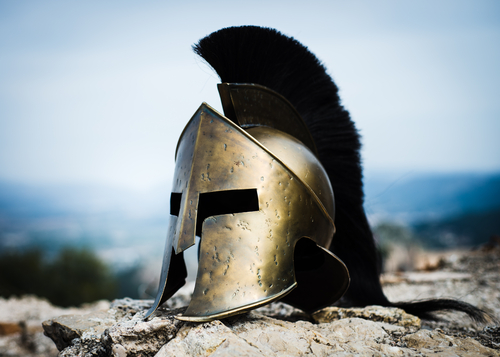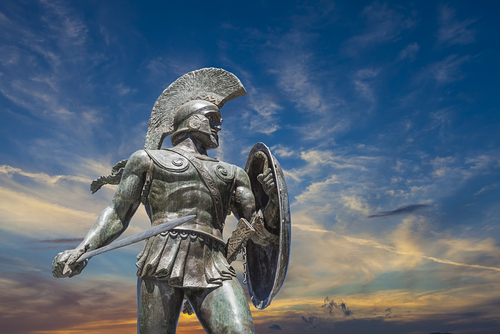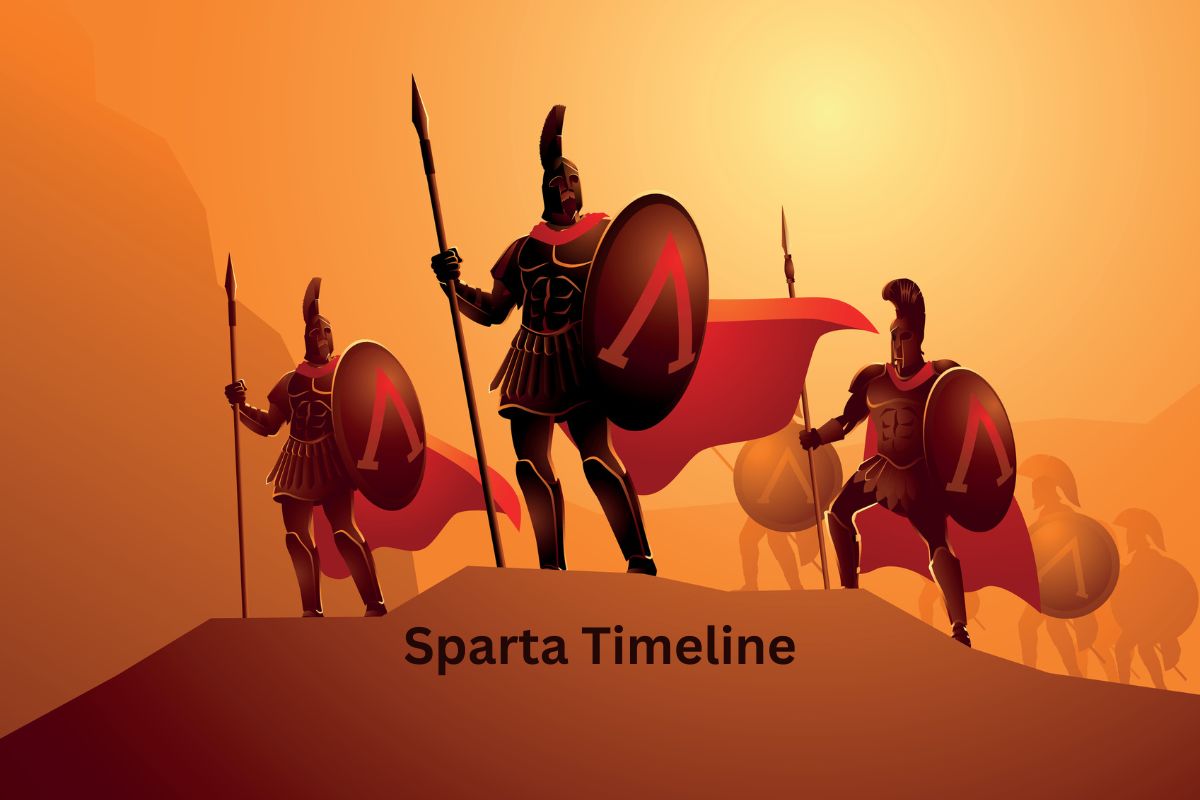Sparta, a prominent city-state in ancient Greece, was renowned for its militaristic society. It rose to power in the 5th century BCE and became a dominant force in the region.
Spartans, known for their disciplined warriors, played significant roles in the Persian Wars and the Peloponnesian Wars.
Despite facing setbacks in the 4th century BCE, Sparta’s unique social structure and military legacy continue to fascinate historians and its ruins serve as a testament to its remarkable history.
| Time Period | Key Events |
|---|---|
| 12th-10th centuries BCE | Dark Ages in Greece. Spartan settlement in Laconia. |
| 8th century BCE | Traditional foundation of Sparta. |
| 7th century BCE | Lycurgus creates Spartan society. Messenian Wars occur. |
| 6th century BCE | Sparta becomes a dominant power in the Peloponnese. |
| 5th century BCE | – 480-479 BCE: Persian Wars. – 460-445 BCE: First Peloponnesian War. – 431-404 BCE: Second Peloponnesian War. |
| 4th century BCE | – 371 BCE: Defeat at the Battle of Leuctra. – 338 BCE: Loss of dominance after the Battle of Chaeronea. |
| 3rd century BCE | Sparta experiences a period of decline. |
| 2nd century BCE | Sparta is conquered by the Romans. |
| Byzantine and Ottoman Periods | Sparta continues to decline and becomes the village of Mystras. |
| 1834 | Modern city of Sparta is founded. |
Timeline of Sparta
12th-10th centuries BCE – Dark Ages in Greece
During this period, Greece experienced a decline in population, economic activity, and cultural development. However, it is believed that the Spartans settled in the region of Laconia during this time.

8th century BCE – Traditional foundation of Sparta
According to legend, Sparta was founded by the descendants of Heracles (Hercules) and became a distinct city-state in the 8th century BCE. Its exact origins are difficult to determine due to the scarcity of historical records.
7th century BCE – Lycurgus creates Spartan society, Messenian Wars occur
Lycurgus, a semi-legendary figure in Spartan history, is credited with formulating the Spartan constitution and laws. He established a unique social and political system that focused on military discipline, austerity, and the subjugation of the helots (enslaved population).
Also Read: Facts About Sparta
During this time, the Messenian Wars took place, which were conflicts between Sparta and the neighboring region of Messenia. These wars resulted in Spartan control over Messenia and the enslavement of its population.
6th century BCE – Sparta becomes a dominant power in the Peloponnese
During the 6th century BCE, Sparta rose to prominence and became one of the dominant powers in the Peloponnese region of Greece.
It established alliances and exerted influence over other city-states, such as Tegea and Corinth. Sparta’s military strength and reputation for disciplined soldiers contributed to its rise as a major power.
480-479 BCE – Persian Wars
During this period, the Persian Empire, led by King Xerxes, attempted to invade Greece. The Spartans, alongside other Greek city-states, played a significant role in the defense against the Persian invasion.
The most famous event was the Battle of Thermopylae, where a small Spartan force, led by King Leonidas, fought valiantly against overwhelming odds but was ultimately defeated. However, the Greeks emerged victorious in the overall Persian Wars.
460-445 BCE – First Peloponnesian War
The Peloponnesian War erupted between the two major Greek powers, Athens and Sparta, along with their respective allies.
Sparta led the Peloponnesian League, while Athens headed the Delian League. The war was marked by several conflicts and shifting alliances, with Sparta eventually emerging as the victor.

431-404 BCE – Second Peloponnesian War
The Second Peloponnesian War was a more extended and destructive conflict between Athens and Sparta, with Athens holding the advantage in naval power, while Sparta had a stronger land army.
The war ended with Sparta emerging victorious, largely due to the support of the Persian Empire, which provided financial aid. The war significantly weakened both Athens and Sparta.
371 BCE – Defeat at the Battle of Leuctra
Sparta suffered a major defeat against Thebes at the Battle of Leuctra. The Theban general, Epaminondas, employed innovative military tactics, including the famous “Theban phalanx,” which shattered the Spartan formation.
The battle marked a significant turning point in Greek military history and led to a decline in Spartan power.
338 BCE – Loss of dominance after the Battle of Chaeronea
The Battle of Chaeronea resulted in the Macedonian King Philip II, father of Alexander the Great, defeating the combined forces of Athens and Thebes. The victory solidified Macedonian control over Greece, and Sparta lost its dominant position.
The Macedonian Empire, under Alexander the Great, would later conquer Persia and establish Hellenistic kingdoms.
3rd century BCE
During this period, Sparta experienced a gradual decline in influence and power. The city-state struggled to adapt to the changing political landscape and faced internal issues, such as social unrest and economic decline. Sparta became a more isolated and less influential player in Greek affairs.

2nd century BCE
In 146 BCE, Sparta, along with the rest of Greece, was conquered by the expanding Roman Republic. Sparta lost its independence and became a part of the Roman province of Achaea. The Romans absorbed much of the Greek culture and incorporated it into their own.
Byzantine and Ottoman Periods
During the Byzantine and Ottoman periods, Sparta continued to decline and lose its significance. The once-mighty city-state diminished into a small village known as Mystras.
It became part of the Byzantine Empire, and later the Ottoman Empire, facing further economic and cultural decline.
1834
The modern city of Sparta was founded in 1834, near the site of the ancient city. The establishment of the modern city marked a new chapter in Sparta’s history, and it continues to be a significant cultural and historical site.
